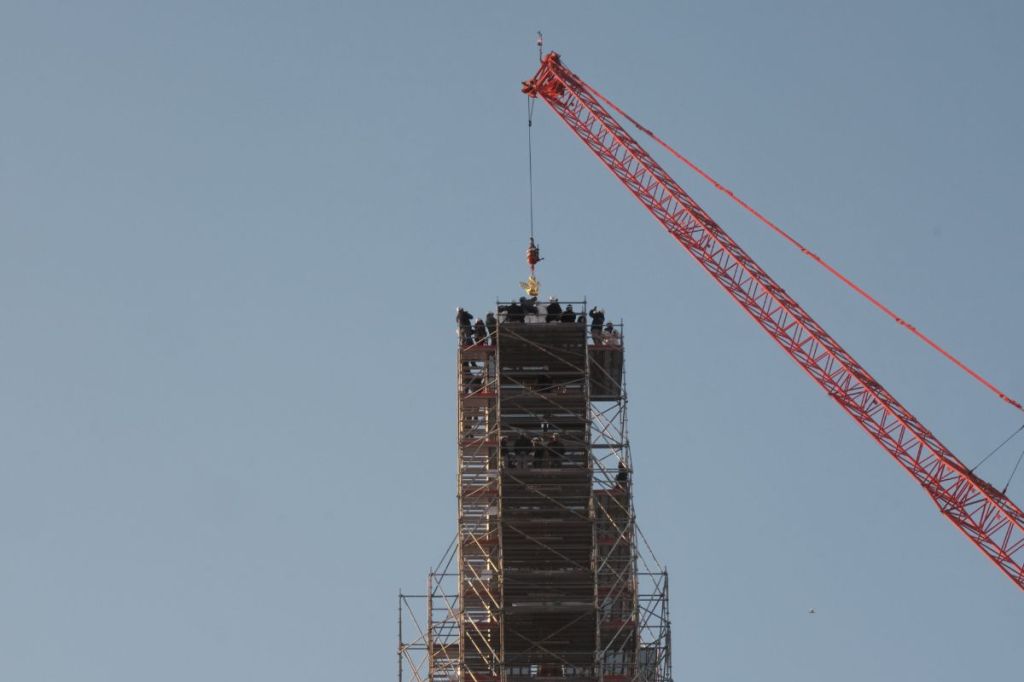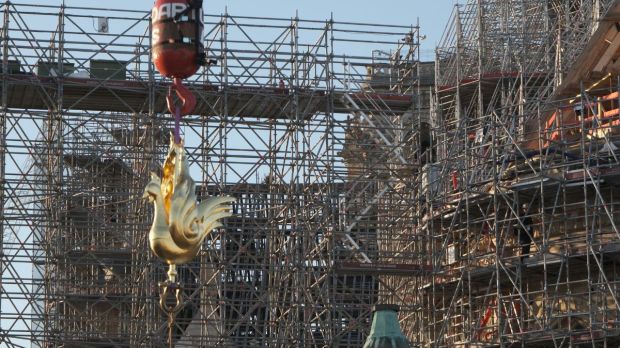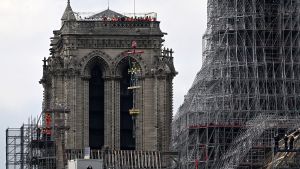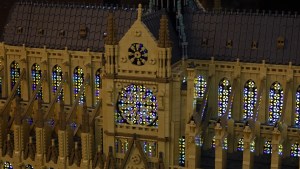Lenten Campaign 2025
This content is free of charge, as are all our articles.
Support us with a donation that is tax-deductible and enable us to continue to reach millions of readers.
It was April 16, 2019: amidst the still-warm ashes of Notre Dame Cathedral in Paris, the cathedral’s rooster-shaped reliquary was miraculously recovered intact, albeit dented. On December 16, a new one was proudly hoisted to the top of the spire, heralding the Resurrection … and the rebirth of Notre Dame. Isn’t the rooster — the animal that crows at sunrise, before dawn — the symbol par excellence of the passage from darkness to light?
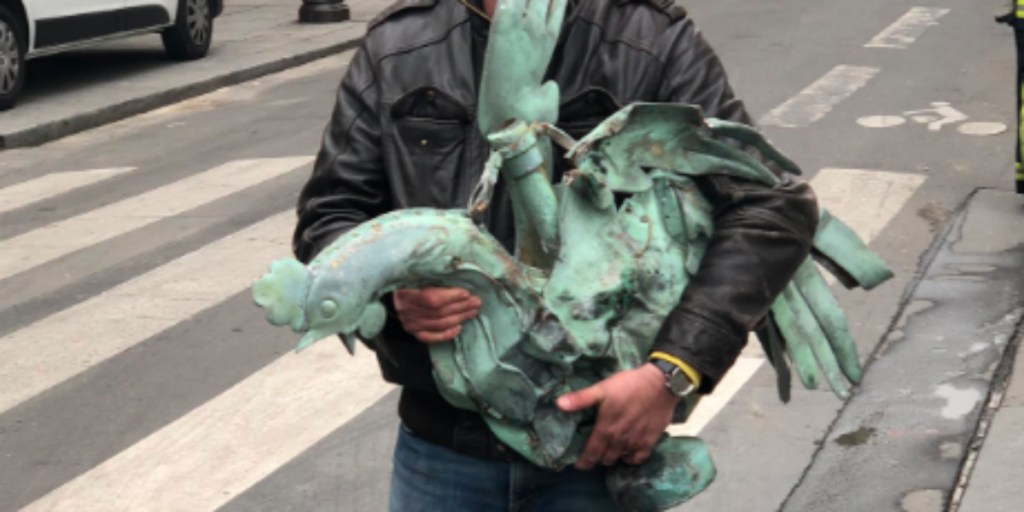
The Notre Dame construction site is buzzing with activity. There are many broad smiles and warm, prolonged handshakes. Even the natural gloom of December has given way to a coaxing sun that floods the walls of Notre Dame with its light, as if in honor of this historic day.
Celebrating Christ and the sacred nature of the cathedral
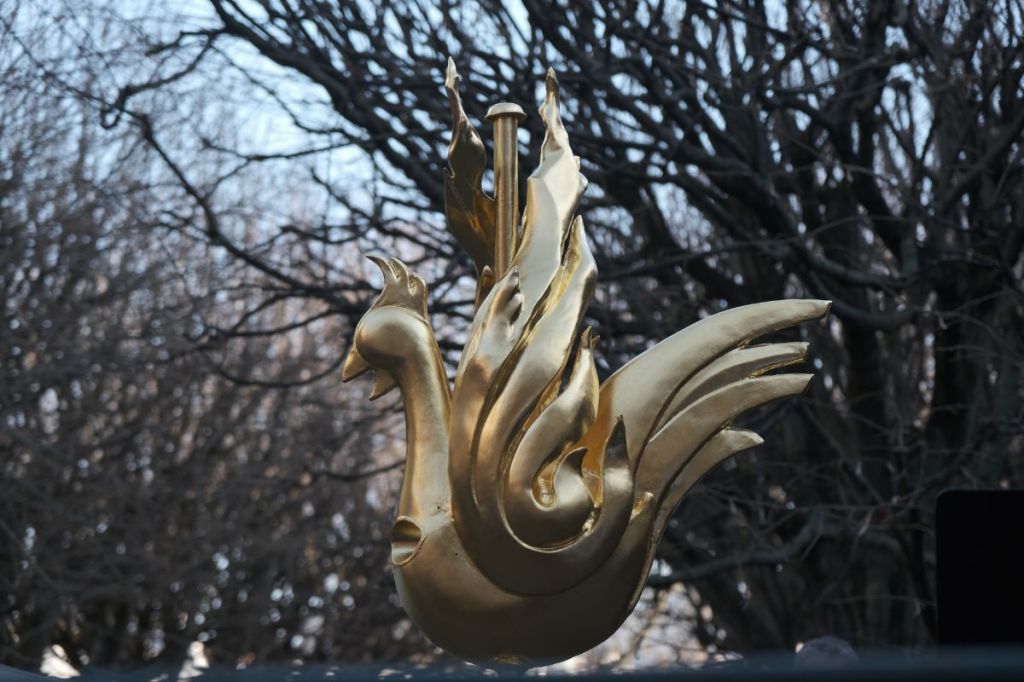
A brand-new rooster replaces the one that fell from the burning spire five years ago. The surviving rooster, made entirely of copper, had preserved its relics intact. The new rooster is covered entirely with gold. Before it was placed atop the cross, which was affixed to the tip of the spire on December 6, the archbishop of Paris held a ceremony reminding us of the sacred nature of this edifice.
“The rooster is the hero of the day, but it’s Christ we’re celebrating,” Archbishop Ulrich of Paris tells Aleteia. “Everything is always turned towards Him. The rooster leads us back to Christ: to the Eucharist, the Word, the sacraments experienced in this cathedral, and of course, to the tons of prayers that will be brought to its bosom by its visitors, each with their own faith and trust. Everyone, believer or not, will know that they are in a place marked by the divine presence.”
For Mgr. Ribadeau-Dumas, rector of the cathedral, “this rooster is the sign that this building is not just a one of national heritage and cultural significance.”
“It was built for the glory of God, and the fact that there are relics inside this cockerel is something very powerful, which allows us to project ourselves towards December 8, 2024, the day the cathedral reopens.”
Hope as a promise
“This day is the promise that we will soon be able to enter our home,” said Archbishop Ulrich before the blessing. “It’s an important moment for the Church, and for all those who love the cathedral. We put all our faith in it. Through all our misfortunes, God is there. May this rooster, which holds the memory of the Resurrection, of life, of courage, be for us a sign of what we are capable of nurturing: Hope.”
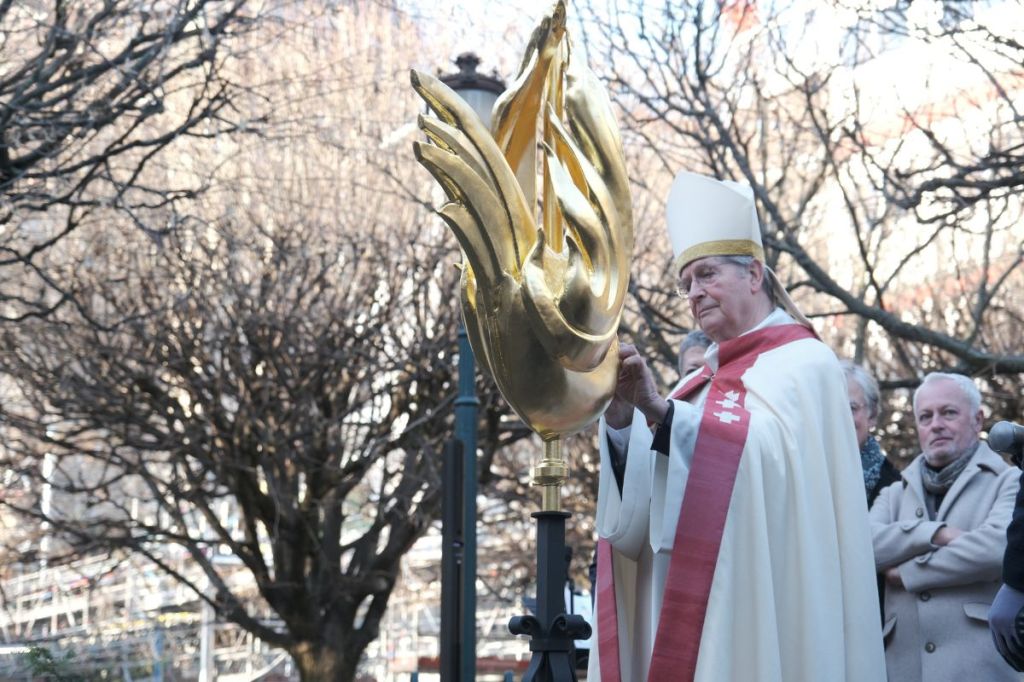
After the reading of the Gospel of the Resurrection according to St. Mark, Archbishop Ulrich blessed the new rooster in a solemn and emotional silence. The relics of St. Denis and St. Geneviève and a thorn from Christ’s crown were once again placed inside.
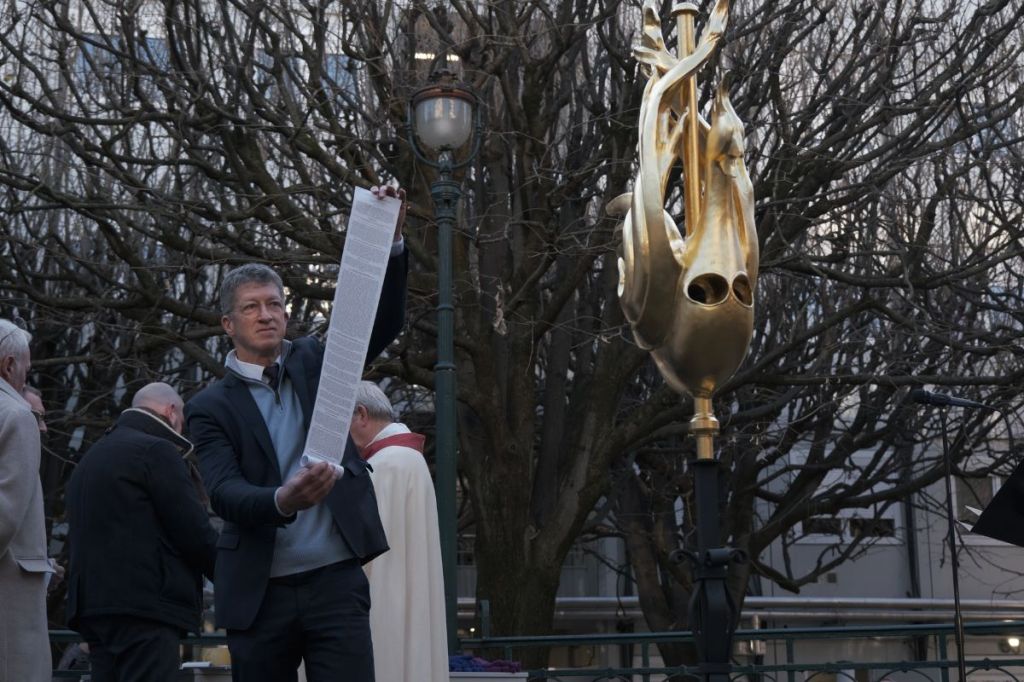
“These relics are the sign that we are an incarnate religion. We were preceded by men and women who followed Christ, and who left their mark on the history of salvation. It’s as if the whole of Christian humanity is embedded within this rooster, which watches over Paris, and France,” says Mgr. Ribadeau-Dumas.
Along with the relics is a parchment bearing the names of 2,000 workers, architects, craftsmen, and patrons of the arts who took part in the reconstruction of Notre Dame.
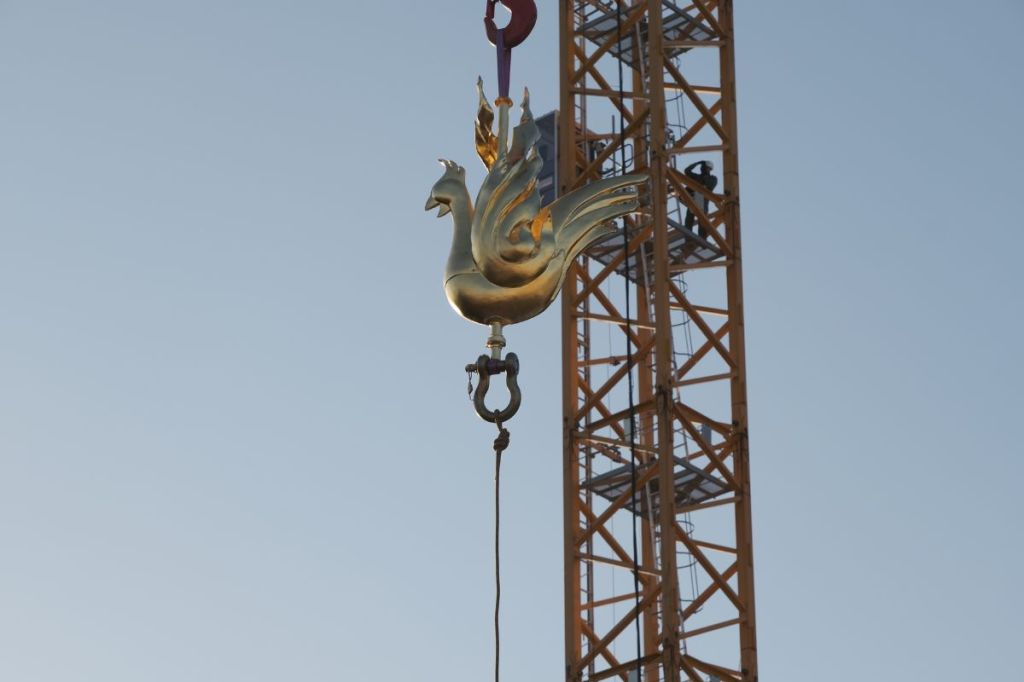
The rooster hangs from the crane. The crowd gathered on the quayside follows its slow ascent. Time seems suspended. At the top of the spire, silhouettes who have climbed the scaffolding wait. Arms outstretched, their hands grasp the reliquary, and all around there are shouts of joy and applause. The rooster has disappeared behind the iron frame that still surrounds the spire. Not for much longer…
